Text
May 29 - Nara Day Trip
Freewiriting
Today was my last day of class and my second to last full day in Japan (thus this will be my final blog post!) Its a bittersweet feeling and I feel like I have been in Japan much longer than one month (aside from the last few days that seemed to fly by) but in two days time, It'll be I'll be making the 24-hour journey home.
I woke up a little later today due to my late return from karaoke with the lads last night (in the early hours of the morning) to take our final quiz. Luckily, I still managed to grab my breakfast bento and get to class for our morning meeting before it began. Following the meeting, we departed for Nara (which turned out to be one of my favorite locations that I got to visit while in Japan.) Nara is well known for its abundant and friendly deer population. Due to one of Nara's Kasugataisha Shrine's deity's having strong connections to deer, killing one was punishable by death in ancient Nara. Due to this, and the deer having no natural predators, there are deer all over the prefecture and they are extremely friendly, they even bow! Our first stop in Nara was a park where you could feed and interact with many of these deer (however they are present all over town.) This excursion was super cool. I got to feed the deer crackers, many of whom bowed to me when I bowed to them (it was adorable). Some of them were greedy and would chew at my clothes to get me to give them them more crackers but I didn't mind because of how funny it was.

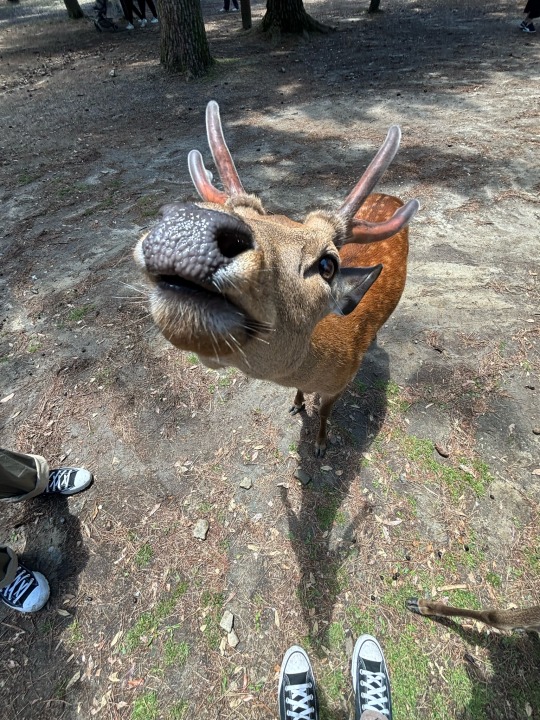

The location that we visited next in Nara was Kasuga-taisha Shrine, known best for its 1000 year old cedar tree. Like many of the other shrines that we have visited in Japan this far, Kasuga-taisha is a world heritage site and it was extremely beautiful. There were rows upon rows of stone lanterns and (you guessed it) even more deer.
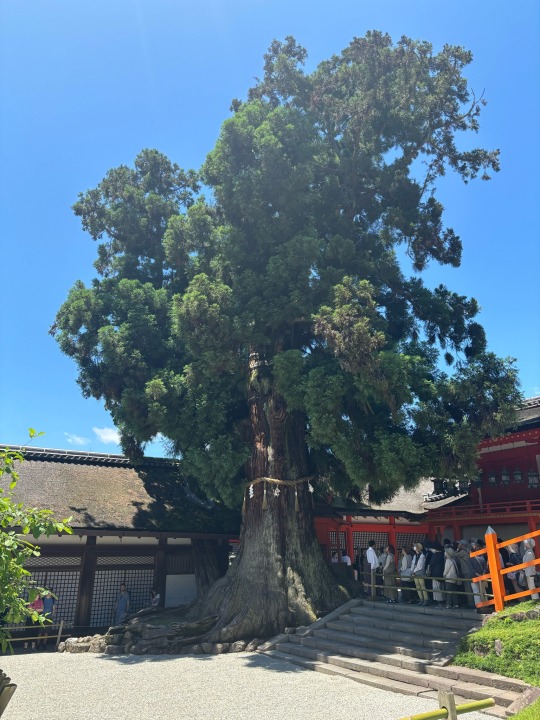
After spending thirty minutes or so at the shrine, we broke up for lunch. I went to a popular local spot with some friends and had a sukiyaki burger with fries (both of which were very good.)

After rejoining the class, we headed to our last location of the day, the Todajii Temple. This temple is the largest wooden building in the world and it houses a gargantuan bronze Buddha statue, as well as various other large depictions of the Buddha. While here, myself and a few friends squeezed through the extremely tight Buddha's nostril sized hole (one by one) to secure a bountiful resurrection in our next life (it was really tight but I made it through with no assistance!)


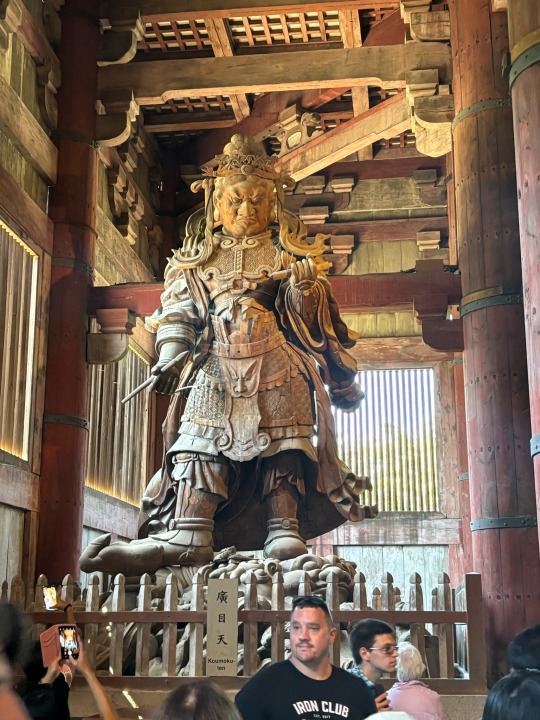
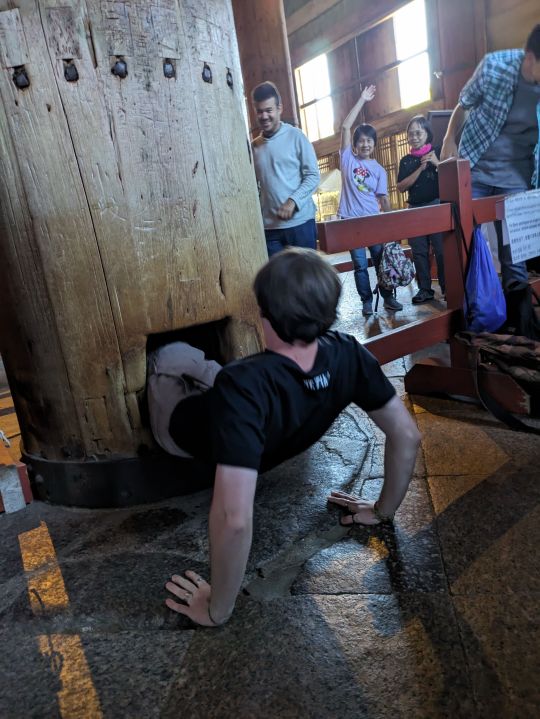
After leaving Nara, I stopped at Kyoto station to buy my shinkansen ticket (for 8:50) on Friday morning to make sure I make it to my flight! I made Ramen when I got back to Stay SAKURA and then went out to dinner with Noah for some Gyoza a little later (the gyoza was fantastic!)


Academic Reflection
Today's readings focused on Shingon Buddhism and its major facets. Shingon Buddhism was founded by Kukai, a Japanese monk and calligrapher who started this variation of esoteric Buddhism after compiling and studying ancient Buddhist texts. The main object of worship in Shingon Buddhism is the mahavairocana, a cosmic Buddha. The readings also placed an emphasis on Vairocana, another Buddha relevant to Nara. His presence was easily felt in Nara, as his likeness could be found all throughout the prefecture (whether it be in art, merchandise or locations of historic significance.) While I was not surprised by his impact in Nara, I was surprised by some of the merchandise that they were selling related to him. For example, stuffed toys for children that portrayed the enlightened being as a chubby little man with deer antlers. This is something that I feel would never happen within other religions, with their revered figures, so I found it really interesting.
Today's readings also discussed Todai-Ji and the large Buddha likenesses housed there. Seeing the massive wooden building and bronze Buddha were not things that the readings could have prepared me for. Reading about them was one thing but standing under the towering Buddha was truly a one of a kind experience. Thinking about how long ago the bronze Buddha was constructed adds another layer of awe to the whole experience.
2 notes
·
View notes
Text
May 28 - Himeji-jo
Freewriting
I woke up at 8 this morning, took my quiz and grabbed my breakfast bento on my way out the door. I quickly walked to our morning class meeting in the pouring rain (which will remain a constant theme throughout today's blog) before we all departed for Himeji-jo (Himeji Castle.) Luckily, the train rides to Himeji weren't too bad, despite them taking more than two hours collectively (which is more than any other day trip so far.) After arriving in Himeji, it was already noon and still pouring down rain so we broke for lunch inside the station. I ate some ramen which was pretty good for the price (I am trying to stick to Japanese food for the last few days that it is readily available to me.)

After lunch we left the station and began our trek to Himeji-jo in a torrential downpour. Within 3 minutes of being outside, I was soaked to the bone (despite the best efforts of my 7/11 umbrella.) The rain and wind were coming down so hard that they ripped one of my classmates umbrellas off of its spokes. Arriving at the castle's entrance, it was clear why we had travelled such a distance to get here, it was an architectural marvel.

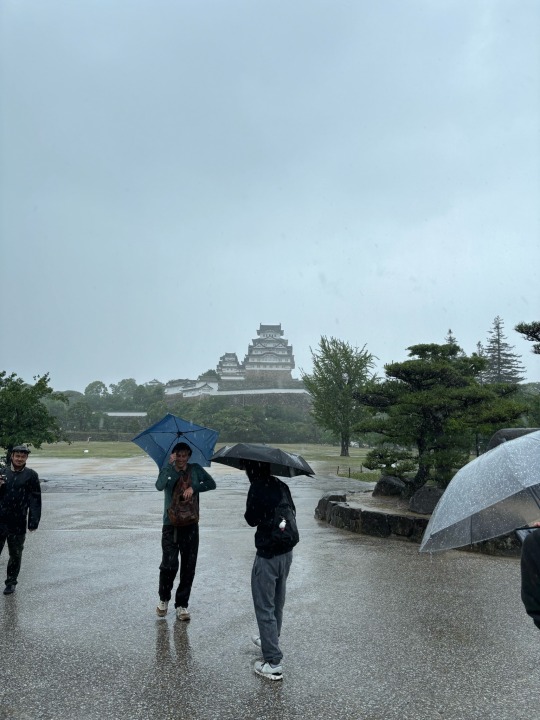

Had it not been for the weather, I think I would have really enjoyed this excursion but the harsh conditions (and the actual pools of water that were at the bottoms of my shoes) made it a little difficult to enjoy myself. Jeans and a T-shirt was clearly not the right wardrobe choice for the day. While at the castle, we visited Sen Hime's room (a well known and revered daughter of an ancient Japanese shogun) as well as other points of interest within the castle. Our exploration of the castle lead us to its top floor, which offered a breathtaking view of Himeji (despite the unfavorable viewing conditions.)
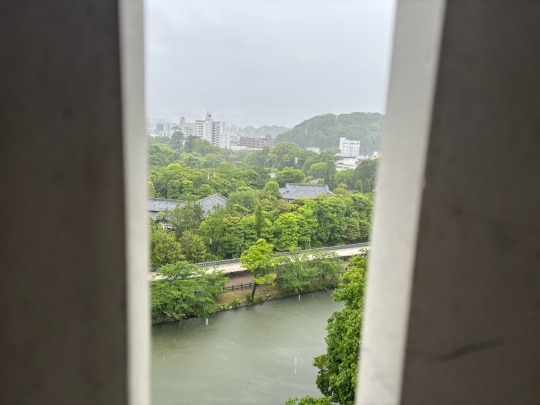
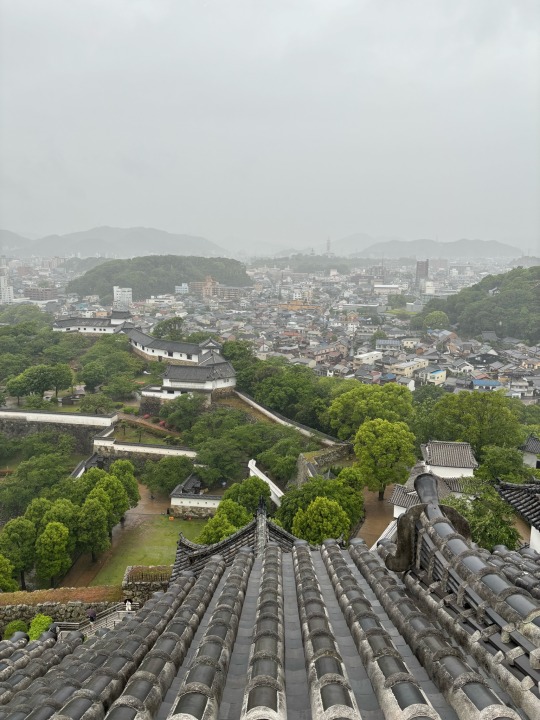
Our final stop at Himeji-jo was an infamous well where a servant was thrown to her death for breaking (or being accused of breaking) a single plate. Legend has it that if your quiet enough, you can still hear her counting up the castle's plates, only to stop at nine out of ten every time.)


Leaving the castle, we retread the deceptively long walk back to the station in the rain before beginning our journey back. The 3 hour journey back from Himeji to Stay SAKURA was brutal, sitting on the train in my soaking wet clothes for such an extended period was extremely uncomfortable. The hot shower after I finally arrived back home, was both life saving and rejuvenating. After resting up for a little, I went to a little dinner place around the corner with Griffin and Rich that was really good.

(We ate more than just this omelet but we scarfed it down so fast that I forgot to take a photo.)
I think the plan for the rest of the night is some guys night karaoke which should be a lot of fun!
Academic Reflection
Today's first reading discussed the role of Japan's Daimyo's in the expansions of castle towns within their domains. Despite widely held historic misconceptions, Daimyo's actually allowed for the peasants and citizens of their castle towns to develop and expand. The Daimyo's would often provide frameworks or assistance when needed, but their role in expansion was dissimilar to their European counterparts who often dominated how their domains would be expanded. The Daimyo of castle towns were often so accommodating that they would be willing to move farms or temples to better fit commoner districts.
Today's second reading focused on the construction of castles in Japan, with a focus on their militaristic applications. Unlike European fortresses of the same era, Japanese castles were built on large hills and mountains, with the walls rising only to the level of the natural landscape. This allowed for varied elevations and easier construction while still allowing the castle to be easily defendable. This was most apparent to me today at Himeji-jo with the various gates and drop offs spanning the castle grounds. The battle of Nagashino had a large impact on the construction of Japanese castles. Most notably, it highlighted the strength of gunner fortifications as the simple musketeer fortifications present at this battle had a major impact on the outcome.
2 notes
·
View notes
Text
May 27 - Arashiyama Bamboo Forest / Arashiyama Monkey Park
Freewriting
Today started like most others, at 8 with a quiz followed by a hurried walk (jog) to our morning class meeting. In class today (while eating my breakfast bento) we discussed historic and modern forestry management in Arashiyama as well as the Sakai chapter of The Tale of Genji. Following our class meeting, we took two trains to Arashiyama where our first stop was the bamboo forest. The bamboo forest was both massive and dense, so much so that it felt like something out of a movie. While inside of the bamboo forest, we visited Nonomiya-Jinja Shrine (a key location mentioned in todays readings.) The shrine was smaller by comparison to many of the other shrines that we have visited in Japan thus far but it was really cool nonetheless (I especially liked the thick moss carpet growing on the ground by the shrine and how hidden it was within the dense bamboo.)
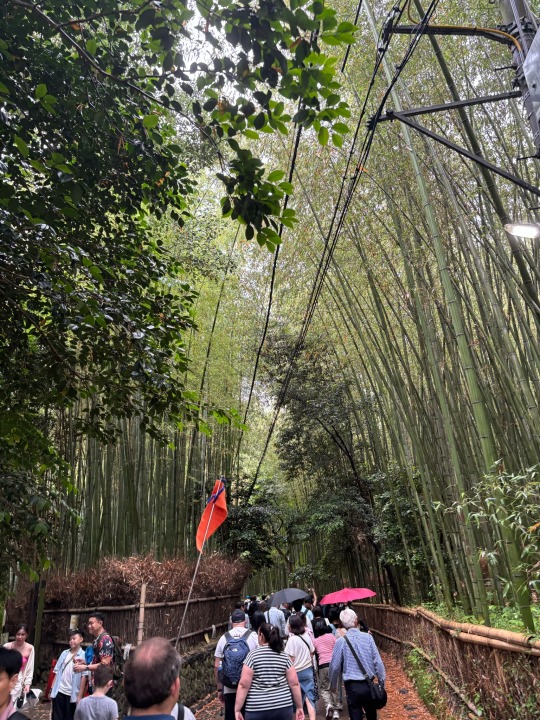
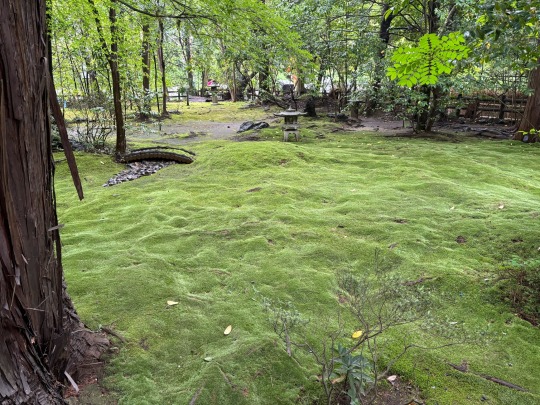
Our next stop in Arashiyama was one of my favorite places we have gone in Japan so far, the Monkey Park. It is exactly what it sounds like and it was just as awesome as it sounds. After a short but STEEP hike up a small mountain, we arrived at the area with all the monkeys. There were monkeys everywhere and they were walking right up to and past us. Some of them were adorable and some were a little unsettling but they were all unbothered by our presence. After taking a class photo and watching the monkeys for what must of been more than an hour, I went into the small building where you could feed the monkeys through a wire fence. This was a highlight for me, I paid 100 yen (like 65 cents) for a bag of apple slices that I fed to a bunch of the monkeys. The smaller ones put their hands through the bars and the larger ones would wait on the other side with an open palm. Both types of monkeys would gently take the apple slices right out of your hand before scarfing it down (it was very cute.) One monkey was very adamant that I should give him more, hollering with his little hand through the bars (almost like he was staying "gimme dat!")
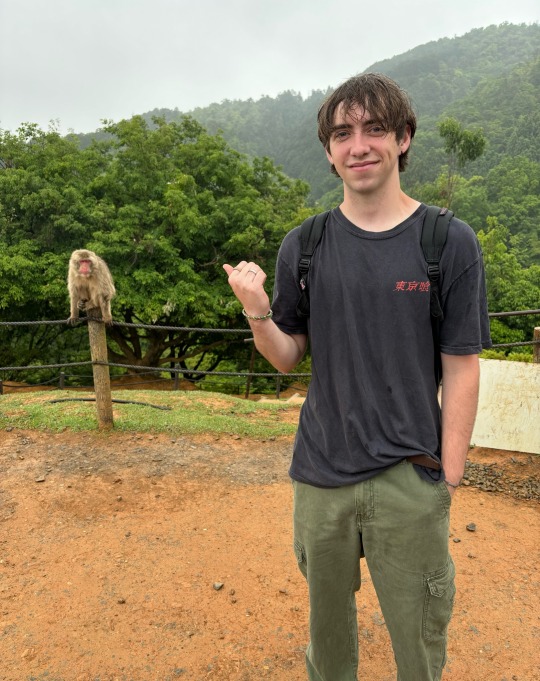
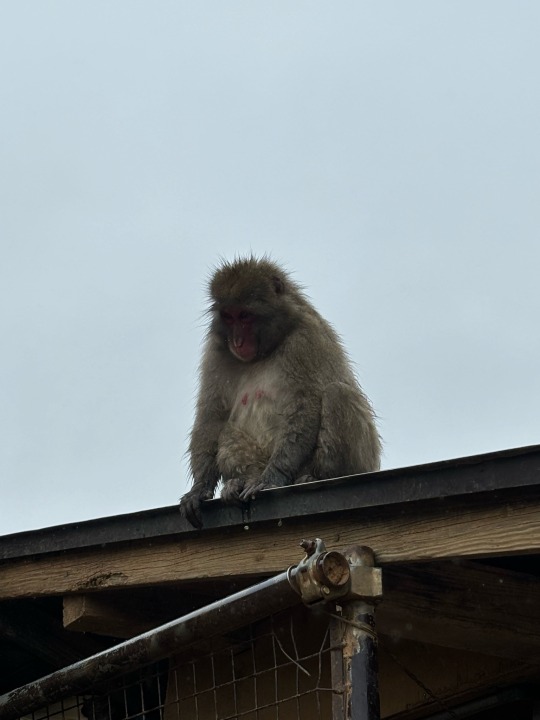
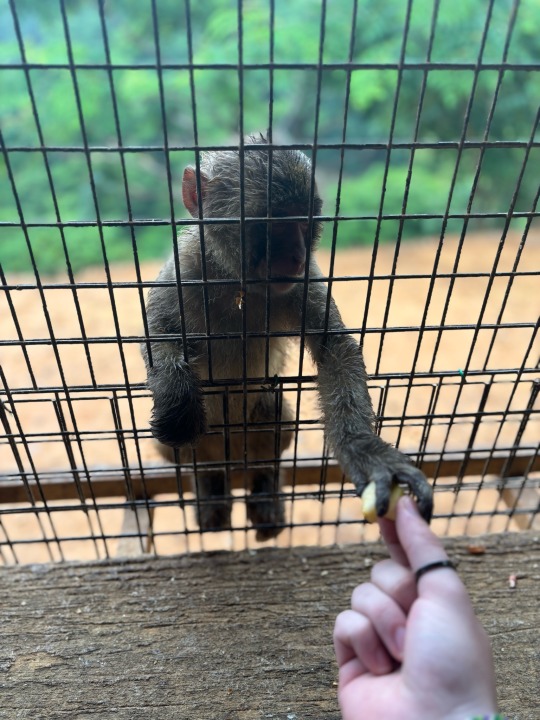
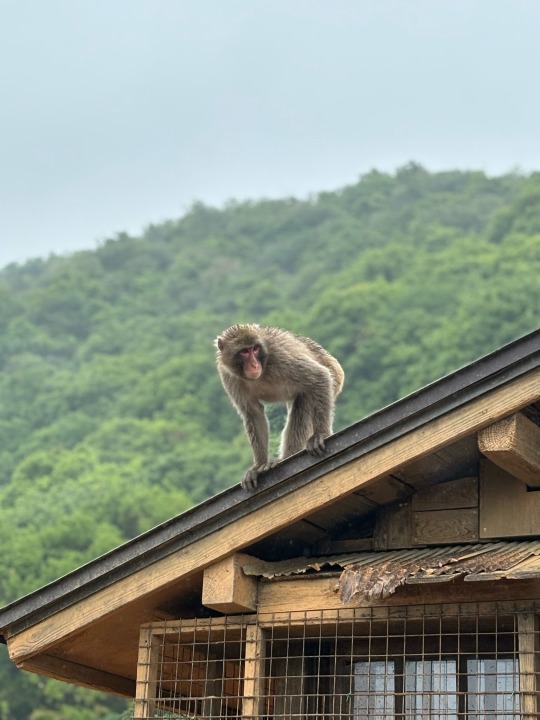
After running out of apple slices, I headed down the mountain and into town to grab some lunch. In town, I had a sashimi bowl that was really good before walking around Arashiyama a bit.
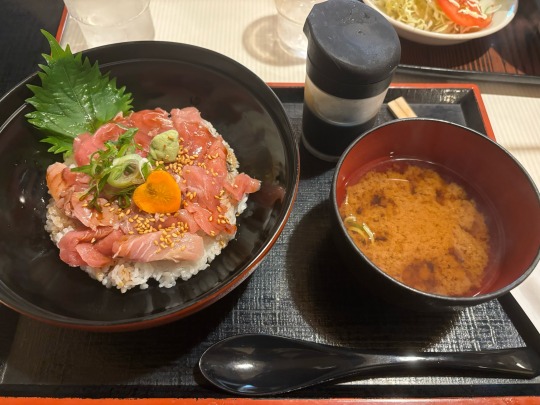
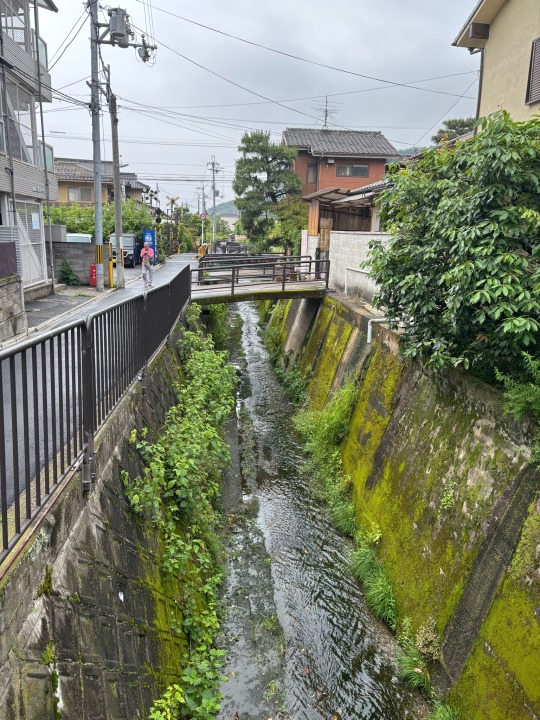

Leaving Arashiyama, I headed to Round One to play some games with a few of the guys. After playing some maimai and DDR, I grabbed a few more gifts for people back home before going to MOS Burger for dinner (still not great, Japanese McDonalds is definitely better.) After MOS, I headed to Stay SAKURA where I turned in for the night!
Academic Reflection
Todays first reading was about the history of Arashiyama Bamboo Forest. More specifically, the history of Japan's protection of the Bamboo Forest dating back to the Heian Era. Back then, protective legislation was put into place in order to preserve Japan's resources. Today, the protection of Arashiyama Bamboo Forest is centered around protecting its scenic views and preventing erosion in the region. Since the Heian Era, Arashiyama Bamboo Forest has faced a multitude of problems stemming from poor legislation, natural disasters, rampantly expanding animal populations and even arboreal disease. Walking through the forest today, I was very pleased that the historic sight had pushed through all of these hardships. I also gained a deeper understanding for why historically, Japan has gone to such great lengths to preserve this natural wonder.
Todays second reading, the Sakai chapter of The Tale of Genji, related to todays excursion by way of Nonomiya-Jinja Shrine (which is located in Arashiyama Bamboo Forest and is a key location within this text.) Nonomiya-Jinja Shrine was constructed as a temporary shrine, intended for the future priestess of Ise. Within the reading, Lady Rokujo (also adressed in the story as The Girl of Nomomiya) who is a mistress of Genji, kills another one of his mistresses. To be honest, this reading was a little hard to follow for me, similar to the Bunraku reading from Tokyo. Due to Genji and Lady Rokujo, today, Nonomiya-Jinja Shrine is known as the shrine of lovers and has shed its temporary status, becoming a perminant fixture of the Arashiyama Bamboo Forest.
1 note
·
View note
Text
May 26 - Kiyomizudera / Mindar at Kodaiji / Gion Tour
Freewriting
Today began like most, at 8 with a quiz. No breakfast bento today (earth shattering news, I know) and our class meeting was brief. We departed for Kiyomizu-dera by train and arrived after thirty minutes or so. As far as Buddhist Temples go, this one was pretty cool (my second favorite of the trip so far) and there was a lot to see and do.


The first thing we did at Kiyomizu-dera was walk through the temple's "womb" to become reborn. This entailed walking through a winding pitch black tunnel under the main temple by following a rope attached to the wall. At the end of the tunnel was a large rock that supposedly grants you a wish when you reach and touch it (the "womb" was actually a really fun experience, I didn't necessarily feel reborn though. The next section of the temple had a large singing bowl which I rang before praying to this section of the temple's kami. We observed the surrounding area of Kyoto from the hanging deck (famous for its nail-less construction) before moving onto the "Otawa Waterfall."
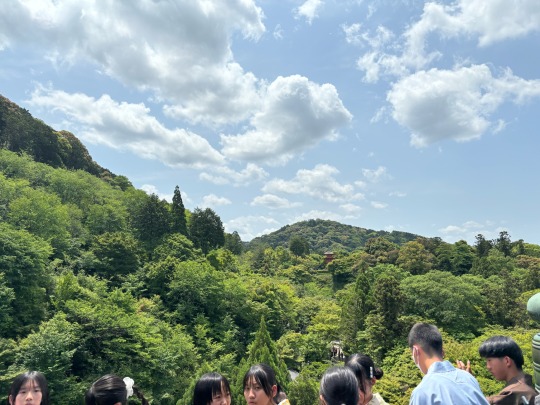

The Otawa Waterfall is not a waterfall but in fact three diverging streams of water, each of which corresponds to an unlabeled blessing from Kannon (goddess of mercy.) You are only supposed to drink from one of the three streams (although one of my classmates didn't seem to get the memo) or the goddess perceives you as greedy and grants you no blessing. This was a really fun experience and the cool water was refreshing after all the stairs!

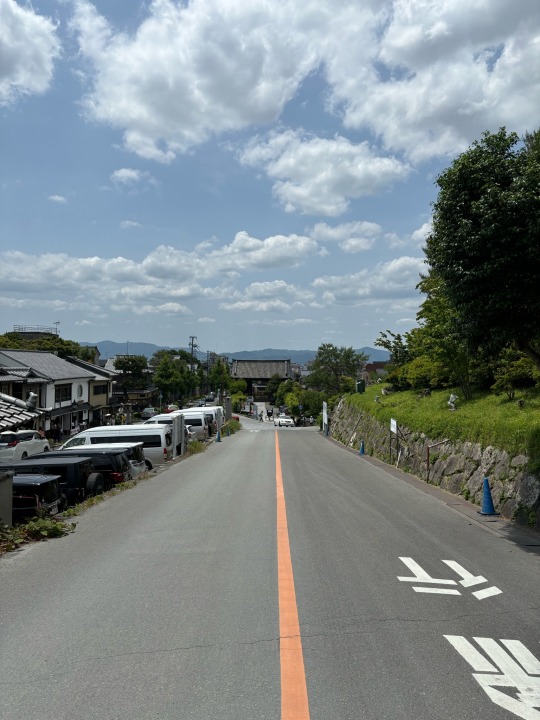
After leaving the shrine, I briefly walked around Sannen-zaka and Ninen-zaka before grabbing lunch with some of the guys and Professor Smith! I had a margherita pizza (shocker) and some strawberry shaved ice while walking around afterwards as a sweet treat.


After lunch, we went to see Mindar, the "android" of the Buddhist goddess Kannon. The "android" gave a presentation on Buddhist ideals and its core teachings, accompanied by a cool light show and projected displays (however, the robot a little uncanny valley for my taste.) It was cool to learn about Buddhism and to see the contrast between the ancient Buddhist temple and this new Buddhist technological development.

After this presentation, we took a short walk to Gion where we walked around for a bit before attending a short Geisha performance. This area of Kyoto is not very tourist friendly (on account of inappropriate tourist behavior here in the past) and I definitely felt that in all the dirty looks that we received. After Gion, I returned to Stay SAKURA where I did laundry and relaxed before going out to dinner with Griffin (we got turned away from four different sushi restaurants before ending up back at McDonalds, at least we tried.) All in all, another eventful and fun day in Kyoto!
Academic Reflection
Todays first reading, derived from a Sekkyo-bushi meaning Sermon Ballads performance, was about the goddess of mercy, Kannon. This reading somewhat changed my pre-held perceptions of Kannon, as parts of this passage painted her as vindictive or even malicious (antonyms for mercy.) For example, Kannon acting to kill Shintokumaru's mother after she insulted the goddess or making lord Nobuyoshi's wife unable to bear children, on account of their actions from a previous life (destroying bird eggs.) To be fair, Kannon also showed mercy and kindness within the reading, such as when she provides Shintokumaru with the feather duster to cure his illness (which I felt was more in character.) I found it interesting to see both sides of Kannon within these excerpts. Kannon's influence can be felt all throughout Japan and I certainly felt it today at Kiyomizu-dera.
The second reading from today, an article titled “Enlightenment Geishas” was about the history of Geishas in Japan. More specifically, the Geisha "enlightenment" that has taken place in Japan in recent centuries. This "enlightenment" refers to the education of Geishas in traditional Japanese practices, marking a shift from being primarily sex workers, to being focused on family life and being productive mothers as well as members of Japanese society. At today's Geisha performance, this education in the arts and refinement was very evident. Both the performance and museum aspects of this excursion were extremely elegant and made me think of high society.
3 notes
·
View notes
Text
May 25 - Osaka Day Trip
Freewriting
Today I woke up at 8 (feeling a little better than I did yesterday) and got ready for our regularly scheduled class meeting at 9. I arrived on time (やった) and ate my breakfast bento during the morning discussion before I left with the class for Osaka by train. The journey there took a little over an hour (way less time than when I navigated my friends and I there) and after arriving our first stop was Umeda Sky Building. This was our third "observatory" of the trip, but I didn't mind as the Birdseye view of Osaka was fairly different from that of Kyoto and Tokyo. One of the highlights of the view was a building that had a highway passing through its first four floors!

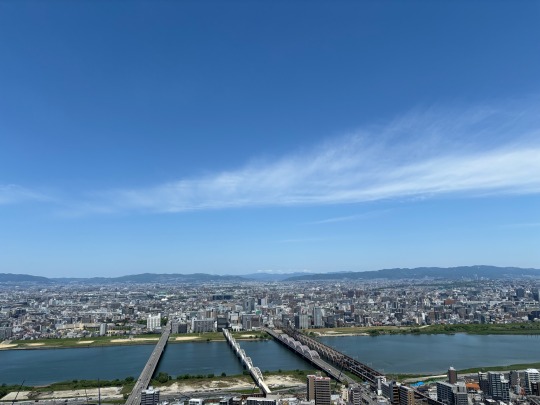
After the Umeda Sky Building, we took a break for lunch where I grabbed some cheap ramen with a few of the guys (I am trying to spend a little less yen this last week as I have burned through a substantial amount of my funds already.) Regardless of price, the ramen was pretty good!
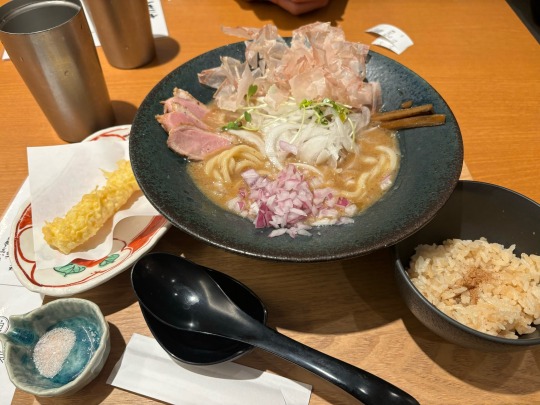
After lunch we walked to Osaka castle, which was deceptively large. Leaving the station its size seemed comparable to the other two castles that we have visited in Japan thus far but once arriving, the building towered over me. It was probably my favorite of the three castles that we have seen so far (unfortunately, the interior has been turned into a museum of sorts so we did not go in.) However, it was still super cool from the outside.

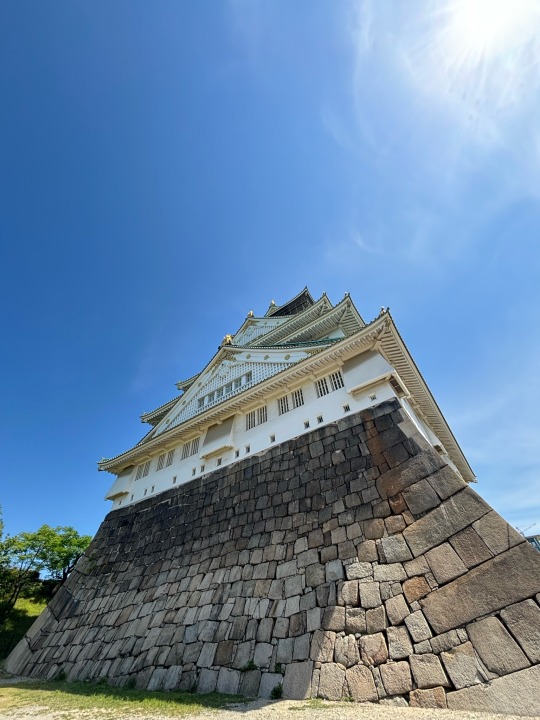
The final location that we went to as a class today was Dotonbori, the main shopping district of Osaka. Everything here was extremely over the top, with massive advertisements of sculpted dragons, crabs, and many other things outside of restaurants and storefronts.

After breaking off from the class for the day, I walked around Dotonbori quite a bit more and got some cool souvenirs for people back home.
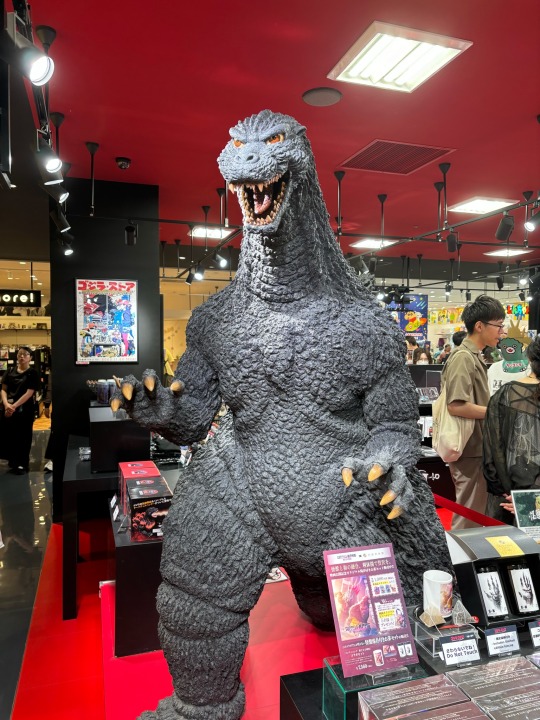



After a slightly confusing series of train rides back, I stopped at McDonalds for dinner (on a budget) before returning to Stay SAKURA to unwind and write today's blog post!
Academic Reflection
Today's reading once again focused on the differences between Japanese cities and their Western contemporaries. More specifically, the layout and zoning of Japanese cities. As discussed in Tokyo, Japanese cities appear more haphazard at a glance and this is due primarily to Japan's less restrictive zoning laws. Due to this leniency in zoning, it is not uncommon to have a variety of businesses, residential buildings, and restaurants all within the same city block or even next door to one another. I personally enjoy this contrast to Western cities and feel that it makes Japan's cities feel far more walkable (of course the excellent and accessible public transportation helps.) I noticed this integration more in Tokyo than Kyoto but it is definitely present in both cities.
Todays reading applied this phenomenon to Osaka (where our today's excursions took us.) Osaka became a heavily industrialized city around the advent of the Shinkansen (specifically, the route from Tokyo to Kobe.) This industrialization drastically effected the quality of life in Osaka, with many considering it to uninhabitable for a time. To remedy the situation in Osaka, the Japanese government implemented land readjustment policies. These policies covered a lot but essentially forced land owners to comply with public building projects, taking away some of the rights previously held by these Japanese land owners. We even saw an example of this in effect on our first excursion today, with the building that has a highway running through it (The Gate Tower Building!)
2 notes
·
View notes
Text
May 24 - Kinkakuji / Daitokuji
Freewriting
Today I woke up at 7 (with a sore throat) and took this morning's quiz before hightailing it to the morning meeting scheduled for 8:10. I grabbed my breakfast bento on my way out of the door so that I could pick at it during the meeting (the rest of my class did the same.) Immediately following the morning meeting, the whole class poured onto a local bus (because much of Kyoto's public transportation centers around buses, as there are less available train lines.) We road the bus to Kinkaku-ji, a famous Zen Buddhist temple in Kyoto, known for being covered in gold leaf. The temple itself was really cool but due to it being a popular tourist destination and today being Friday, the temple was unfortunately mobbed with tourists.


Our next stop after Kinkau-ji, was Daitoku-ji Temple which was about a 30 minute walk away (this was lightwork, considering that on excursion days I usually average around 25,000 steps.) Daitoku-ji is home to various karesansui gardens (often mislabeled as "Zen gardens" by westerners) that were beautiful. Unfortunately, I was not able to take any photos inside the gardens due to strict rules, but I was able to take photos of the outside temples which were equally as cool! We spent some time mediating within the karesansui gardens and it was a very peaceful and pleasant experience.
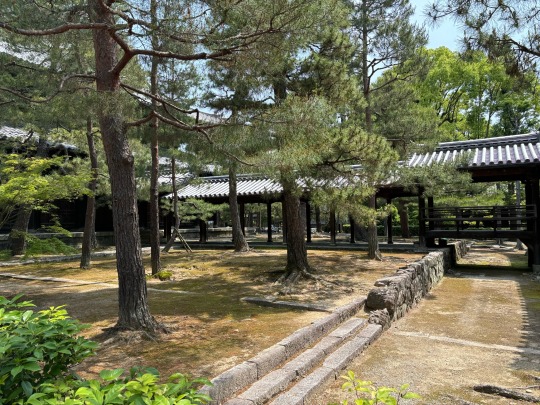
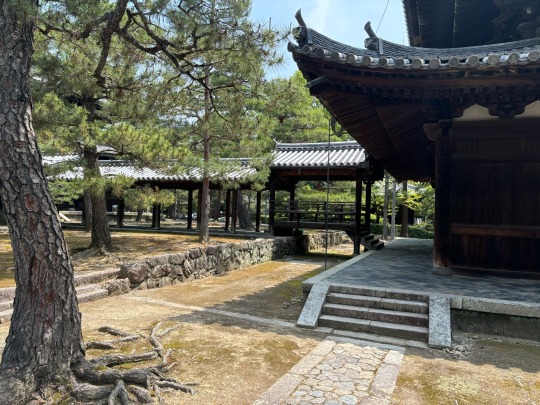
Daitoku-ji Temple was todays last group excursion, so after being released a little earlier than I had originally anticipated, I grabbed some lunch with the guys at "The Hamburger." Japan once again delivered with some great and authentic tasting American food (I love burgers.)
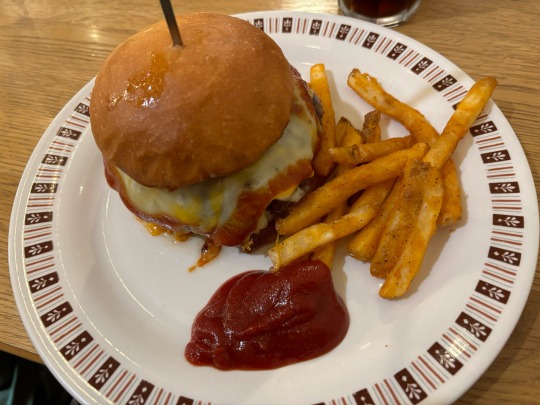
After catching a bus back from "The Hamburger," I took a three hour nap (I hadn't been feeling great all day and am probably coming down with what many of my sick classmates have but this nap definitely helped!) Following my nap, I went back into the city with Rich and Zachary where we got some Chinese food and I bought a carry on suitcase to bring home all the stuff that I've bought (I don't know who I was kidding thinking I was only going to need the one I brought with me.) I took it easy for the rest of the night and even got to facetime Corinn!
Academic Reflection
Kinkau-ji was a truly breathtaking site to witness. I find it to be extremely impressive that the temple lasted from its initial conception until 1950. Unfortunately, in 1950 a 21-year old monk burned the historic Zen temple to the ground in an unprecedented act of arson. No one is certain as to why the young man did this but it is heavily speculated (mainly by renowned author Yukio Mishima) that he did so because of his own idealization of the temple's beauty. The prevailing theory is that he committed the act of arson because Kinkau-ji Temple's beauty was preventing him from finding other beauty within his life. Personally, this feels like a reach to me. Especially considering how little is known about the young man who committed the act of arson but regardless it is an interesting perspective.
The other site that we visited today, Daitoku-ji Temple is home to various karesansui gardens (often mislabeled as "Zen Gardens" by the West.) The tour of Daitoku-ji Temple's gardens was really insightful and I found it really interesting how the gardens all represented Buddhist lands of thought. For example, the "flowing river" of small rocks or the large rocks that represented mountains featuring cascading waterfalls.
3 notes
·
View notes
Text
May 23 - Osaka / Kaiyukan Aquarium (Freeday) + Media Reflection
Freewriting
Today was another (and our final) full free day! It was a little unideal to have our two free days in Kyoto on days two and four in Kyoto, but it is what it is. I of course took full advantage of this opportunity to sleep in until 10 (I know, crazy stuff!) After rousing from my slumber, I ate two croissants (purchased from family mart yesterday,) before getting ready to head to Osaka with Zachary, Griffin, and Noah. Leaving the hotel, no one was super eager to navigate to Osaka, so I offered (rookie mistake on all of our parts to be honest.) I lacked the insight to find the aquarium's official name (Kaiyukan Aquarium) and assumed that Osaka Aquarium would be sufficient (it was not.) After about two hours of train rides, while waiting for our bus to "Osaka Aquarium," Noah decided to double check our destination and it turns out that "Osaka Aquarium" is a pet store about an hour away (by train) from the actual aquarium (oops.)
So, after catching ANOTHER train we arrived on the correct island and grabbed food in a shopping mall (which was probably the coolest mall I have ever been in) before heading into the aquarium. The island itself was super cool and had way more to do than just the aquarium, but we kept our eyes on the prize.
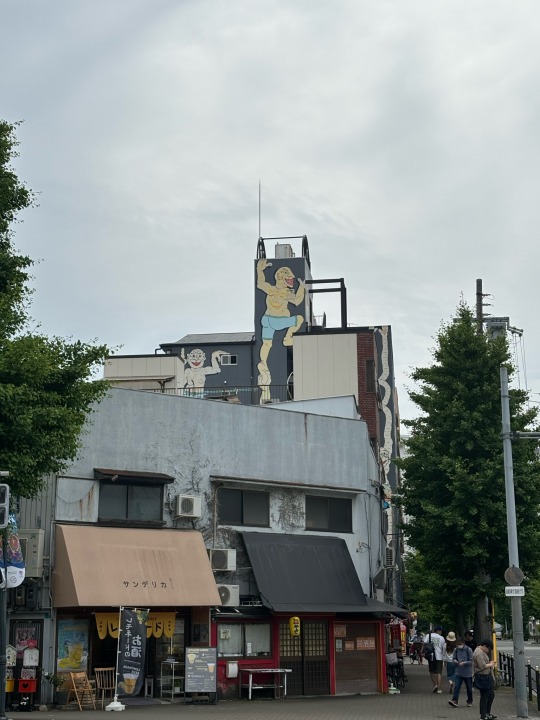

We split up in the mall and Zachary and I went to a beef place while Noah and Griffin decided on Wendy's. The restaurant we ate at was called ビフテキ (Beef Teki) and it was delicious (I have attached an image to rub it in!)
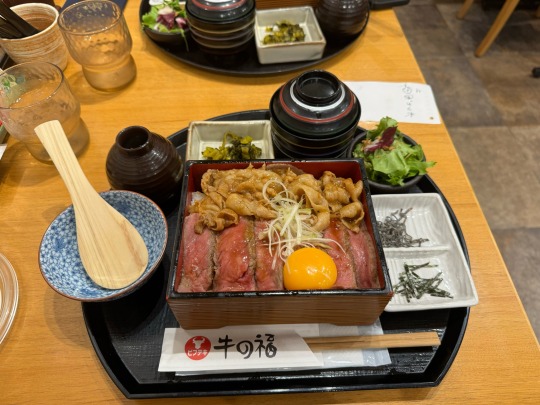
After eating, we finally went to the aquarium (roughly three and a half hours after out initial departure from Kyoto.) The aquarium was amazing (best aquarium I have ever been to hands down.) The standouts for me were definitely the penguins and whale sharks, although the seals doing tricks were also pretty cool.


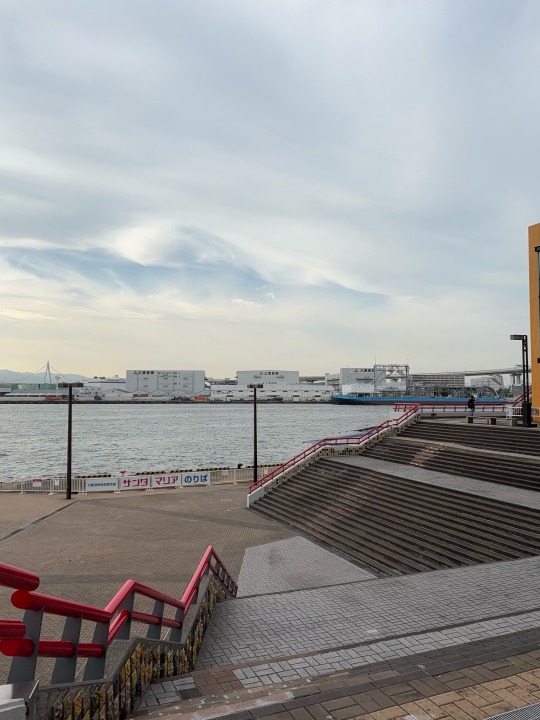
We spent about two full hours exploring the aquarium before catching a few trains back to Kyoto (the journey back took significantly less time, I was not the one navigating.)

After getting back to Stay SAKURA, I chilled out for twenty minutes before grabbing dinner at a little place around the corner with Griffin and Zachary. No picture this time as I was pretty hungry and inhaled my food. It is now 10 and I plan on watching some TV for a little before getting an early night, as our meeting tomorrow is at 8:10 (meaning I will be waking up at 7:10.) Overall another eventful and fun free day in Kyoto!
Independent Excursion: Media Reflection (Jujutsu Kaisen & Kaiyukan Aquarium)
Jujutsu Kaisen is an extremely popular Japanese manga series (with an equally popular anime adaptation) written and illustrated by Gege Akutami. The series has been serialized in the popular weekly manga magazine, Shonen Jump since March of 2018. As of May 26 of this year, the well received manga has 261 chapters and is currently ongoing. Since 2020, Jujutsu Kaisen has been in the top four of Shonen Jump's most popular serializations, only losing out to One Piece for the first place spot for the past two years (2022 & 2023.)
I am a huge fan of Jujutsu Kaisen and after seeing Kaiyukan Aquarium and its iconic whale sharks be beautifully depicted in chapter 70 of the manga (as well as Season 2 episode 3 of the anime,) I knew this was a location that I had to visit while I was in Japan.
The section of the "Hidden Inventory" story arc that depicts Osaka, follows the main cast as they travel to Osaka to rescue a kidnapped character. Despite Jujutsu Kaisen being a Shonen series and centering around a fictious power system called "cursed energy," the series depictions of locations in Japan (such as all of Shibuya and much of Osaka) are extremely accurate. Much of the Japanese culture depicted in the show (by the high school and older aged characters) is also authentic to what I have experienced in my time here. After spending two weeks in Tokyo and two weeks in Kyoto, it is clear to me that Gege Akutami inserts his fictional characters into nonfiction settings. Perhaps this is a part of why his series is so successful in Japan, as well as in other countries.
Within the Osaka and Kaiyukan Aquarium sections of the Jujutsu Kaisen story, Riko Amanai is enjoying her final day of life with her new friends before she is to be absorbed (which is most likely to lead to her death) for the good of Japan and the world (within the world of the series obviously.) While walking in the aquarium and gazing at the whale sharks, she has an epiphany about how large the world is and how little of it she has actually seen up to this point. This ultimately leads to her making the decision that she wants to keep on living and see more of what the world has to offer. Below is the two page spread of Amanai walking past the whale sharks tank.

While in Japan, I have had a similar realization. Japan has totally changed my world view and opened my eyes up to how people live in other parts of the world. Prior to this trip, I had only traveled within Europe and the United States and all of the countries that I had visited had similar ideals to the United States and were set up in a similar way. Japan is the first major departure from this that I have experienced myself and it makes me excited about what else the world has to offer. Having struggled with my own mental health in the past, I relate to Amani's epiphany in seeing the beauty of things that were before, unbeknownst to oneself.
While at Kaiyukan Aquarium, I searched for the exact location of the manga panel that I previously mentioned. While I could not recreate the exact shot, I am still happy with the level of accuracy Gege Akutami provided within his work.

The vibe and feeling of the aquarium were dead on, aside from Amani being the only one there in the manga, as it was quite busy when I went (however, this is not an issue in the anime.) I would certainly say that Jujutsu Kaisen provided a reasonable depiction of the real world location, with almost no slippage between the media and reality.
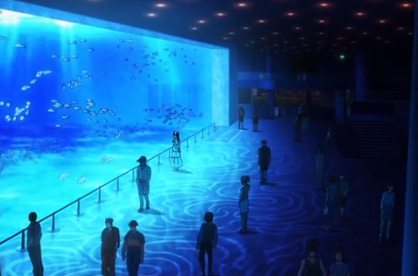
2 notes
·
View notes
Text
May 22 - Kyoto Imperial Palace / Kyoto National Museum
Freewriting
After arriving at our class meeting this morning (following a brisk 7 minute walk as I was cutting it a little too close,) we discussed the "World Shining Prince" reading before embarking on our first excursion of the day. Kyoto Imperial Palace was said excursion and the palace grounds were as massive as they were beautiful. Our tour guide (who spoke fluent English) told us all about the palace's rich history while showing us around. We got to see more of this palace, than the one we visited in Tokyo, as the emperor does not currently occupy Kyoto Imperial Palace. The various gardens were probably the standout parts of the tour for me as they were like something out of a fairytale. They were perfectly manicured, seemingly untouched and a variety of rich greens (I'm finding that I really like plants.) The tour was pretty interesting (when I could hear the guide) and definitely hot (I was pretty hungry after but wouldn't have an opportunity to eat lunch until after our second and final excursion of the day.)



Speaking of our second excursion, we left Kyoto Imperial Palace and headed for Kyoto National Museum. Kyoto National Museum was not really what I was expecting but I really enjoyed looking at Sesshu's art (I put more information about Sesshu and the museum in the academic reflection portion of today's post!)

After leaving the museum, Noah led us to a little family run udon shop called Ito-chan (the udon was delicious and I ate every last drop.)


After eating, I headed back to Stay SAKURA to rest up for a while before going back out to explore Kyoto with Zachary. While walking around, we stopped at a custom ring place (which was pretty cool and pretty cheap) before grabbing some steaks for dinner at IKINARI STEAK. My steak was delicious and miles cheaper than what I would have had to pay in the U.S. (I am balling on a budget after all.)

Following dinner, I headed back to Stay SAKURA where I am now writing todays blog post!
Academic Reflection
Todays reading, an excerpt from "The World of The Shining Prince" provided some interesting insight on the conception of Kyoto. Unlike Tokyo and many other Japanese cities (small and large,) Kyoto was meticulously planned out. The grid-like system on which Kyoto was laid out, has made the city easy to traverse and understand for me since I arrived a few days ago (thank you Heian period city planners.) It is pretty easy to see the glaring differences in the level of planning put into Kyoto when compared to Tokyo. I also found it interesting within the readings, how Kyoto's architecture was heavily inspired by the desired lifestyle of its residents and reflected their ideals.
Kyoto National museum was not exactly what I was expecting, as all three floors only featured art by and inspired by the famous Japanese artist Sesshu. His work was extremely impressive and he had a very distinct style, despite refining his craft nearly 600 years ago. While walking around the gallery, his "Landscape of the Four Seasons" was probably my favorite piece. The intricate artwork spanned a scroll of over ten meters and the brush strokes remained consistent throughout the whole expansive piece. (I would love to attach a photo but the museum had a strict no phones or photography rule, so do your own research for this one!) This photo depicts the view from outside the museum.
3 notes
·
View notes
Text
May 21 - Kyoto / Kimonos (Freeday)
Freewriting
Today was a free day and you know what that means, I woke up at 9:30! Which was unfortunately a little too late to grab my breakfast bento (I was devastated) but I was happy to catch up on some much needed sleep. After recovering from the previous night, I left Stay SAKURA with Zachary and Griffin for a late brunch (it was 11:30, so lunch is probably the more apt term.) We tried to eat a ramen place near the hotel but after being told it would be a thirty minute or so wait, we returned to the manga cafe from yesterday where I had another B.E.L.T (it was just as delicious today as it was yesterday.) I also noticed today that Pendleton Ward, the writer of one of my favorite shows had signed the cafe’s wall (which I thought was pretty cool!)
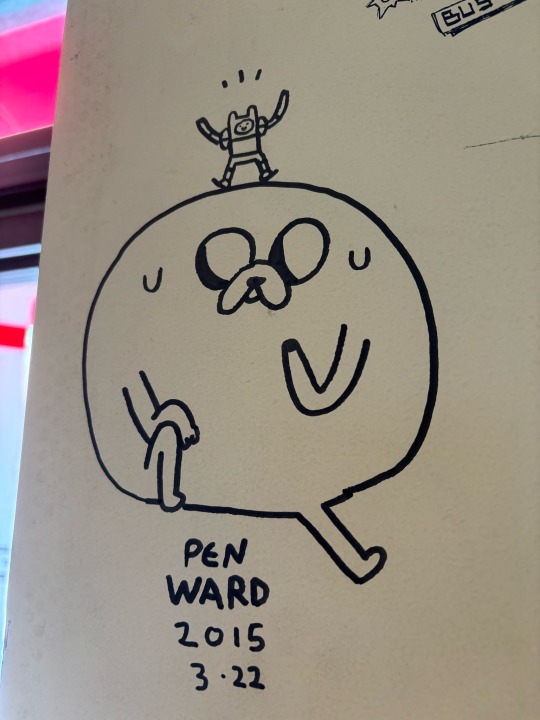
Our kimono reservation wasn't until 3 so we had a few hours to kill in Kyoto. We decided to walk to the Kamo River, an iconic location in Kyoto. The river was beautiful and we walked along it for thirty minutes or so before heading back to Stay SAKURA. In that time, we saw a few little waterfalls and even crossed the river using some jumping rocks (it was really cool.) This is definitely a spot that I will return to before my time in Kyoto is up. Perhaps I'll even wake up early one morning to go for a run along the river (we'll see though, my track record indicates that the likely hood of me waking up early enough for that is pretty low.)
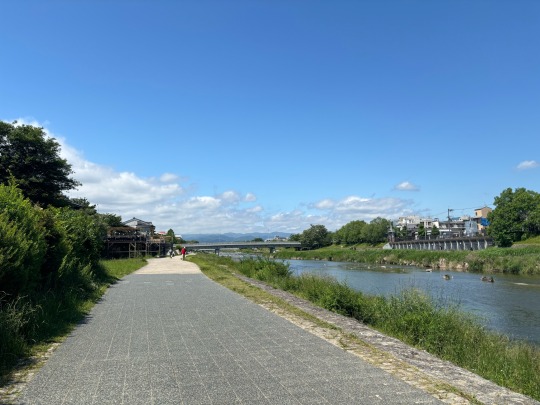

After arriving at the station and catching our train for three stops, we were in the part of Kyoto where our kimono reservation was. It took about an hour for the four of us to pick out all of the necessary elements that make up the kimono and to get dressed. After fitting up, we walked around a nearby shrine, through a little shopping district, and up a waterway (stopping occasionally to take pictures, of which I took by far the least.)



After an hour and half of walking around, we returned the traditional Japanese garb and went to grab some traditional Japanese grub. We ended up at a little hole in the wall Yakitori place and the chicken I had was pretty great! After dinner, we stopped to get some cookies before riding the bus back to Stay SAKURA where I am now writing today's blog post. Might go to a laundromat in a little but other than that I plan on staying in and resting for the duration of the evening.
2 notes
·
View notes
Text
May 20 - Kyoto International Manga Museum / Fushimi-inari Shrine and Hiking Mt. Fushimi
Freewriting
Today I woke up in a western style bed (as opposed to a futon on a tatami mat floor) for the first time since arriving in Japan and I am happy to say that "real" beds still live up to the hype. After a good nights sleep, I took a shower in my hotel room's shower room (top 5 shower of all time, shower room is a real game changer) before picking up Zachary and my breakfast bento boxes from the front desk. After scarfing down what seemed appetizing out of my bento box (which wasn't much as it was mostly pickled vegetables,) I began the trek to the building in which we will be having all of our morning meetings while in Kyoto. After the ten minute walk, meeting, and pop-quiz it was time for our first excursion of the day, the Kyoto International Manga Museum. We arrived early so I had some McDonalds breakfast (which was far superior than what American McDonalds offers for breakfast) before returning to and exploring the museum. The museum had the largest collection of manga in any one location that I had ever seen (it was extremely cool.) The museum also had hand sculpts of famous mangaka (manga writers) that showed how they hold their pens when drawing (the picture under this is the sculpt of Yusei Matsui’s hand, a mangaka whose work I really enjoy.

They also had a small area where you could draw, so I doodled a little!
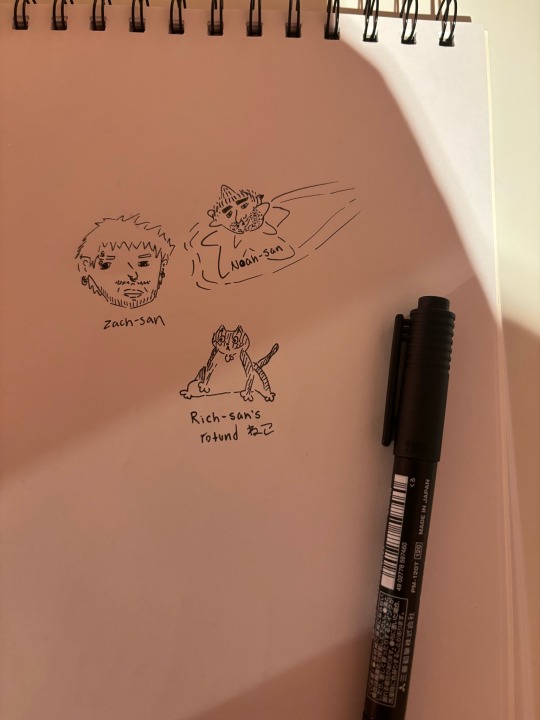
After our time at the manga museum was up, I got lunch at the cafe next door, which had walls lined with manga characters drawn by different famous mangaka. I had a B.E.L.T for lunch here and it was delicious.

The next and final excursion of the day was Fushimi-inari Shrine, where we hiked Mt. Fushimi. This was another one of my favorite excursions of the trip thus far. Both the shrines and the hike were beautiful. The location featured thousands of tori gates as well as many fox decorations and statues (as the fox represents the Okami Inari, the deity for whom these shrine are for.) It is a super popular spot in Kyoto so it was quite busy, but once again Japan managed to take my breath away. I think showing instead of telling here would be better so I'll just attach some photos!

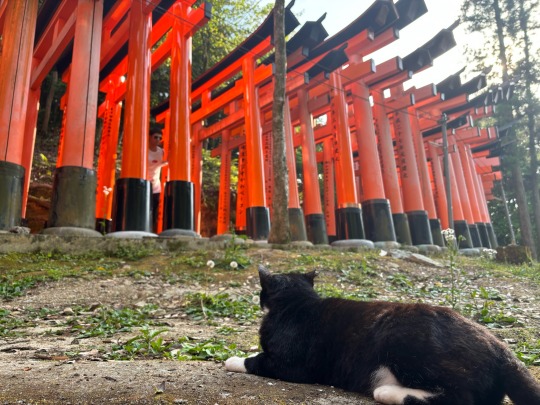
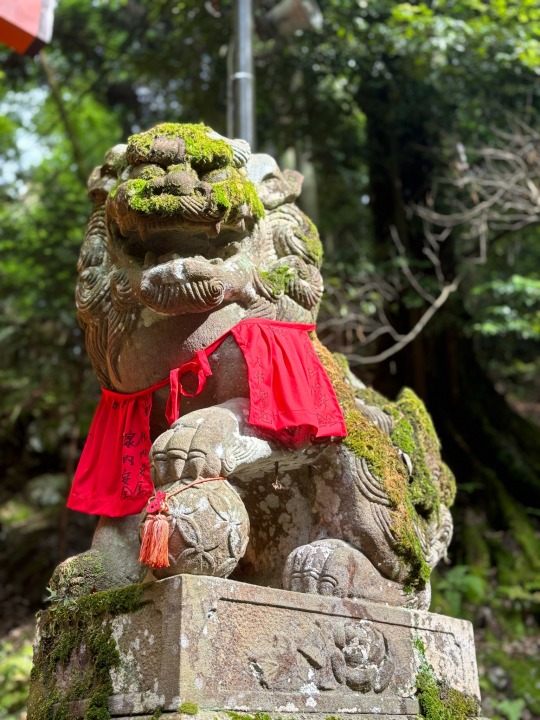
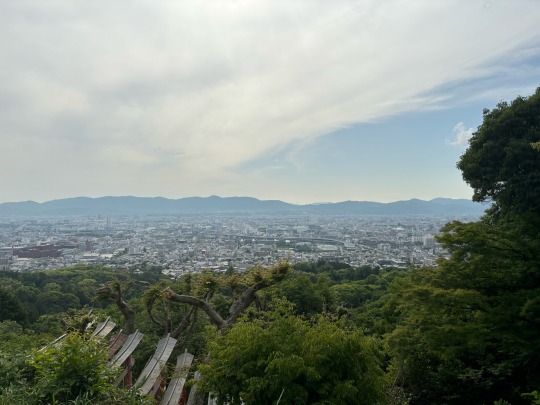
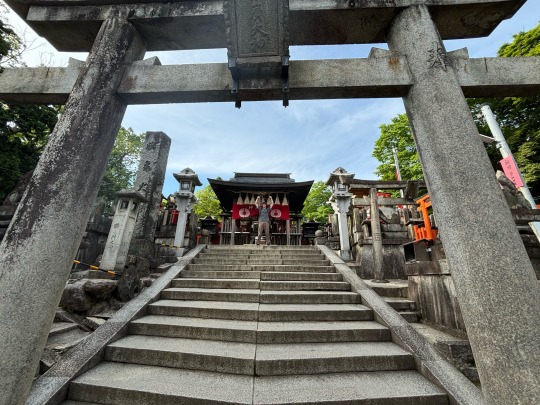
After reaching the summit of Mt. Fushimi and returning to Stay SAKURA (our hotel,) I grabbed some Italian for dinner with Zachary, Griffin, Noah, and Rich before turning in for the evening.
Academic Reflection
Fushimi-inari shrine is located in Kyoto, Japan and is dedicated to the widely worshipped Okami, Inari. While who and what Inari exactly is, is widely debated among religious and academic figures in Japan, they all agree on a few key things. Firstly, despite misconceptions among the Japanese populous, Inari is not a fox but instead a deity who rides on and often travels with a fox. Due to much of the symbology around Inari being related to this fox, many individuals misunderstand the fox to be Inari themselves, when this is not the case at all. The second thing most religious figures agree on, is that Inari protects crops (most notably rice,) aids Japan's major industries, and promotes general prosperity. Thirdly, the symbology heavily associated with Inari is that of foxes, jewels, rice and fried tofu (all of these were represented at Fushimi-inari shrine when I visited today, by large statues of foxes holding these key items in their mouths.) Despite officials agreeing on these three things, the discourse about Inari is still ongoing and will most likely remain this way. This is due to their being no central authority on the matter, but instead many competing understandings that are more or less consistent.
2 notes
·
View notes
Text
May 19 - Travel to Kyoto
Freewriting
Today was a pretty uneventful day as the majority of it was spent traveling from Tokyo to Kyoto. Today's meeting began at the normal time of 9 so I woke up at 8:30 to give myself enough time to get ready and pack the remainder of my things for the journey. We left from Ochanomizu station and arrived at Tokyo Station where we would catch our shinkansen (bullet train) to Tokyo. The shinkansen ride itself was actually really cool as we reached speeds of up to 180 miles per hour. The views of Japan's smaller cities and countryside's (and Fuji-San) racing by, as the train tore its way down the tracks was unlike anything I have ever seen on a train before. After arriving in Kyoto, we had over an hour to kill at the station before we could check into the hotel so I grabbed some lunch with some friends (I had teriyaki chicken and it was surprisingly good for a restaurant in a train station.)

After arriving at our new hotel (Stay SAKURA) and unpacking my things, I set out to explore Kyoto a little and grab some dinner with a few of the lads. Right outside our hotel was a really cool little shrine and as I walked around more of Kyoto, I kept finding more shrines all over the city.
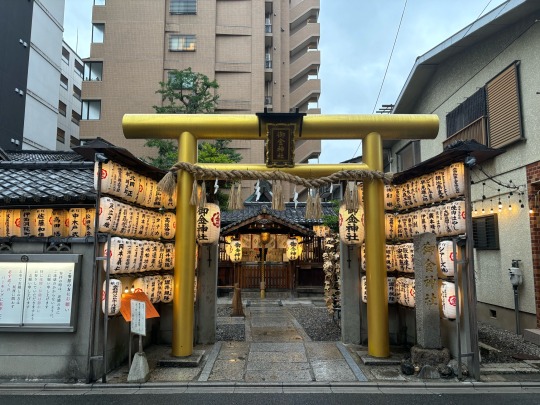
The last thing that I did this evening was grab some food at a Chinese restaurant (which was really good) before grabbing some ice-cream and heading back to the hotel. I wouldn't go back however as they kept forgetting to prepare Zacchary's food and seemed pretty unapologetic about the whole ordeal.

Academic Reflection
Japan's Shinkansen (bullet train) was the world's first ever high-speed rail service. Japan opened the first Shinkansen line in October of 1964 between Tokyo and Osaka, in preparation for the 1964 Olympic games. Japan had originally intended for more lines to be available by this time but due to time constraints and other extenuating circumstances this was not possible. The Shinkansen was one of many efforts being made by Japan at this time to portray themselves as a successful and developed nation (distancing themselves from the world's old perceptions of them following world war 2.) The Shinkansen gives the Japanese people an efficient and affordable way to travel across the country, allowing areas and people to be more interconnected. Additionally, by limiting travel time, people who travel by Shinkansen have more time to spend in their destinations, leading to further stimulation of Japan's economy. While an undeniable feat of engineering and technology, the Shinkansen does have unintended negative impacts on certain groups in Japan. For example, people displaced by the Shinkansen's construction or villages that lack stops from the Shinkansen (or its faster counterparts.) Not having a stop in ones city can be detrimental to the local economy because travelers opt to go to locations where Shinkansen stops are available instead. In this way, the Shinkansen has the unfortunate ability to make or break the economy of small Japanese towns.
2 notes
·
View notes
Text
May 18 - Akihabara / Sanja Festival (Freeday) + Academic Reflection
Freewriting
Today I woke up at 9 (which is the best part about free days) before packing all of my clothes back into my suitcase to send off to Kyoto. As today was my final day in Tokyo, I wanted to do everything that I hadn't yet gotten a chance to do. So for an early lunch, I walked into Akihabara with Zachary where we ate gyoza and fries (unsurprisingly delicious.)

After lunch, we walked around Akihabara and looked in some cool stores, my favorite of which sold extremely rare and high end Pokémon cards (obviously no purchases were made.) Our last stop in Akihabara was a 7 story arcade where we played the rhythm game MaiMai which involves hitting buttons on and around a large circle screen on beats that coincide with the selected song. It was a lot of fun but I kept losing to Zachary by only a few points so I'll just have to lock in next time we play.

Leaving the arcade, we caught a train to Asakusa from Suehirocho station. We met up with Ren at a Starbucks just outside of Asakusa Kannon Sensoji (the massive temple that we had previously visited on our first day in Tokyo.) I came here today to attend the Sanja Festival, which takes place over the course of three days at Asakusa Kannon Sensoji. This is one of the most popular annual festivals in Tokyo, brining in around two million people over the course of the three day event. The entire city of Asakusa was lively and dressed for the occasion. It was a really cool thing to be able to experience while here and I even got to see large groups parading carts (carts are large and heavy portable shrines) through the streets.
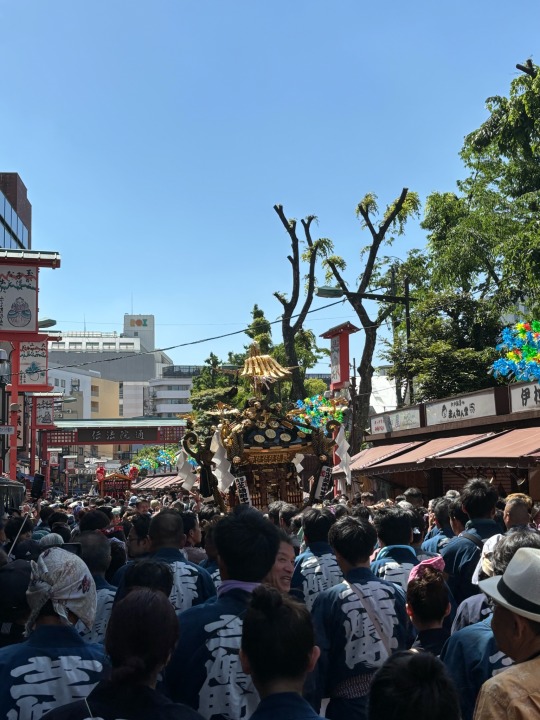
Seeing the community of Asakusa come together in this way to celebrate the three founders of Sensoji temple was amazing. After spending a little over an hour participating in the festivities, Zachary and I walked around Asakusa, stopping to look in some stores. I bought a new pair of earrings (sorry mom) before we stopped at a cat cafe for ten minutes which absolutely lived up to the hype (spiritually healing experience.) Our last stop in Asakusa was a local sushi place which was both delicious and very affordable.
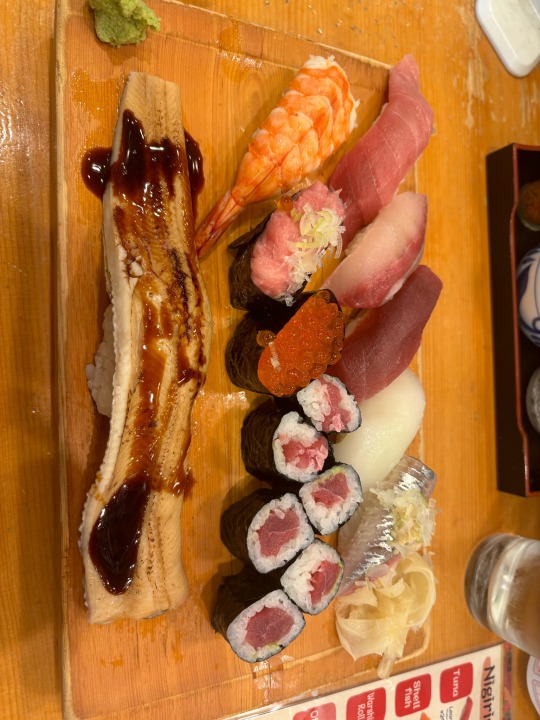
After leaving Asakusa, I returned to the hotel to rest up before our journey to Kyoto tomorrow but I think I will be leaving to go to Round 1 soon with the lads (Round 1 is an entertainment chain that has an arcade/ bowling/ batting cage/ and everything else you could want!)
Independent Excursion: Academic Reflection (Sanja Matsuri)
For my final free day in Tokyo, I returned to Asakusa to attend the 2024 Sanja Matsuri (Matsuri meaning festival). The Sanja Matsuri has been held annually in Asakusa since the Edo period and is an extremely well known event throughout all of Japan. The Sanja Matsuri is held to honor the "three men" who founded Senso-ji temple (Sanja directly translates to three people.) The three founders are two fisherman brothers, named Hamanari Hinokuma and Takenari Hinokuma and a village cheif, named Nakatomo Hajino.
In order to learn more about Sanja Matsuri for my academic reflection, I selected and analyzed the reading, Script and Score: Revisiting Nelson Goodman at Sanja Matsuri - Japan by Ray Lucas. This reading is a section from Architecture, Festival and the City with an emphasis on the architectural and anthropological factors of Sanja Matsuri in relation to the festival's traditions and history.
Within the reading, Lucas discusses the "collapse of various strata of social and spiritual life into the space of the city" in relation to the culture surrounding Sanja Matsuri. Lucas is referencing how diverse the cast of participants and practitioners of the Sanja Matsuri can be. Within the reading, he points this out by mentioning how the Tengu (Japanese mountain goblin) walks around Asakusa alongside priests and geishas, who can be seen with blue collar workers (such as fisherman and carpenters.) These are aspects of Japanese society that typically see little to no overlap, but at the Sanja Matsuri everyone comes together as equals to celebrate the annual festival and the founders of Senso-ji (Senso temple.) This was not something that I had realized while at the festival, but in hindsight this diversity and intermingling of different facets of Japanese society was definitely present. For example, the parishioners carrying the portable shrines were of all different ages and walks of life. However, they were all equally involved and invested in the festival. Additionally, there were even smaller portable shrines being carried around by kids, assisted by an adult when needed (it was really cute.) This level of across the board involvement is what Lucas was referencing in the selected reading.
Within the reading, Lucas gets this point across by employing a number of different methods. By utilizing maps, drawings and photographs, Lucas is able to drive his point home in an effective and convincing manner. One area that I felt Lucas did a really great job explaining with these methods was the outfits worn by those involved in the festival. The outfits are described as stiff or rigid and Lucas challenges this based on some of the poses depicted in historic drawings of the festival. I found this reading to be very interesting and it enhanced my enjoyment of the festival after the fact.
Lucas, Ray. “Script and Score Revisiting Nelson Goodman at Sanja Matsuri – Japan .” Essay. In Architecture, Festival and the City, 81–96. London, United Kingdom: Routledge, 2019.
2 notes
·
View notes
Text
May 17 - Odaiba / Barbecue / Teamlab
Freewriting
Today I woke up at 7:30 to another pop quiz (lucky me,) fortunately I had done the readings the night prior so the quiz wasn't too bad. I skipped Edoya breakfast.. again (I will go tomorrow though) and got ready for our morning meeting. After our meeting, we prepared to leave for Odaiba. Odaiba is a manmade island island in Tokyo Bay that is a popular entertainment and shopping district. Our first stop in Odaiba was the Fuji Television "Museum" which turned out to be a glorified gift shop. Racing up the eight flights of stairs outside the gargantuan building was the highlight of the "museum" for me (I won but I was out of commission for at least thirty minutes afterwards.) After the Fuji Television "Museum," the class left for an outdoor barbecue place where we had three grills and all the meat that a boy from Florida could dream of. I was the grill master for my friends and I and I took great pride in my work (I cheffed up some good meats.) The view of Tokyo Bay from the Barbecue restaurant was probably the highlight of the meal for me.

Following lunch, we walked by DiverCity Tokyo, a massive mall with an even more massive Gundam outside (think of a Gundam as a Japanese transformer that a person has to pilot.) The size of this piece of fiction was so impressive that I had to come back later on in the day to buy a model kit to build a (much, much) smaller version of it.
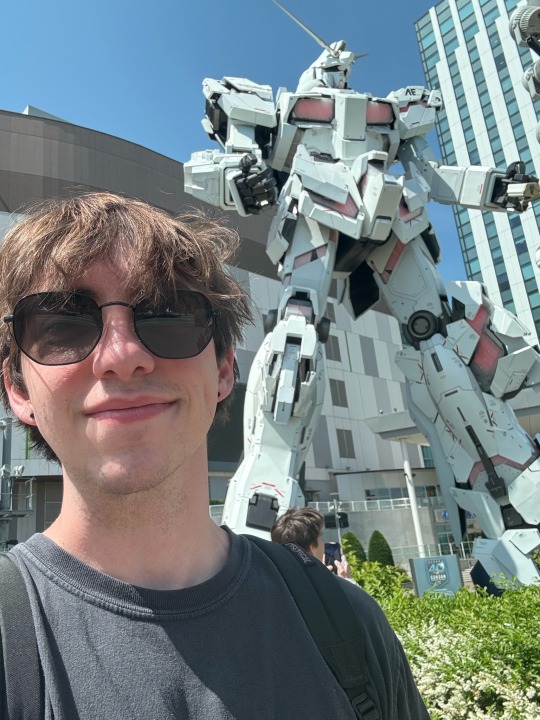
Our final class destination for the day was Teamlab Planets, an interactive art museum. Upon arriving we were instructed to remove our shoes and socks before entering, as many of the exhibits involved walking through water or some other type of sensory input for your feet (basically Corinn's worst nightmare.) As a whole, Teamlab Planets was pretty cool, and walking around the art museum with my friends was a lot of fun. My favorite exhibit was one where they had living flowers hanging down from the ceiling, all the way down to the floor that you sit under and look up at.
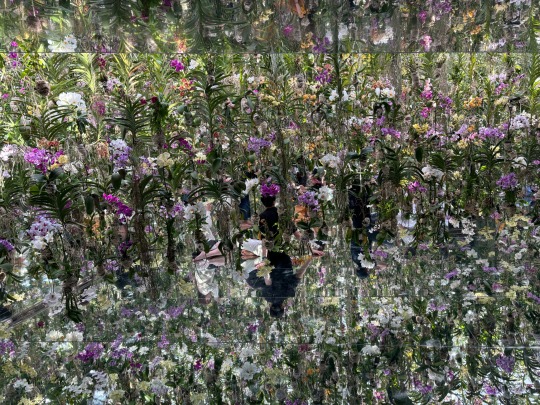
After our final excursion, Noah, Rich, Griffin, Zachary and I returned to DiverCity Tokyo to play some arcade games and walk around. We headed back to hotel Edoya after a while where I am now doing laundry before getting ready to go out tonight for Griffin's 20th birthday!
Academic Reflection
Odaiba was first constructed in the 1850s with Japan's defense in mind. However, the manmade island was repurposed in the 1990s to become a major commercial area, pandering to Japan's emerging tourism market. Upon visiting Odaiba today and once earlier in my trip, this commercialization was extremely apparent. The towering Gundam, one of a kind architectural marvels, and wide passageways that traverse the city were obviously designed with tourism in mind. When compared to the other cities and prefectures that I have visited in Tokyo and Japan thus far, it is no surprise that Odaiba is frequently compared to a theme park. It felt like walking around City Walk, Orlando with the exception of having no rollercoasters painting the backdrop skyline. Acknowledging this, I also do not find it surprising that Odaiba is frequently criticized for ignoring local history. Odaiba began as a trash dumping site as well as a location where feudal weapons (guns) could be taken for repair. Odaiba's origins are not felt or seen at all when walking around the city and this modernization and gentrification within Japan is not a problem exclusive to Odaiba. When large corporations like Fuji TV take root in locations like Odaiba, to grow their "digital content factories," the rich history has an unfortunate tendency to die out.
3 notes
·
View notes
Text
May 16 - Hiking Mt. Takao
Freewriting
Today I woke up at 6:30 because I was under the impression that we would be leaving for Mt. Takao at 7. In actuality, our departure was at 8 but we had a pop-quiz due then so it gave me plenty of time to review todays reading before taking it. I decided to skip hotel Edoya's breakfast and opted to eat a chocolate croissant that I purchased from 7/11 last night instead (I was very content with this decision.) After my healthy and well-balanced breakfast, we left for Mt. Takao and it took us around an hour and half to arrive at the mountain's base. After a short walk, we took a chairlift up a ways, before hiking to Takao's summit.
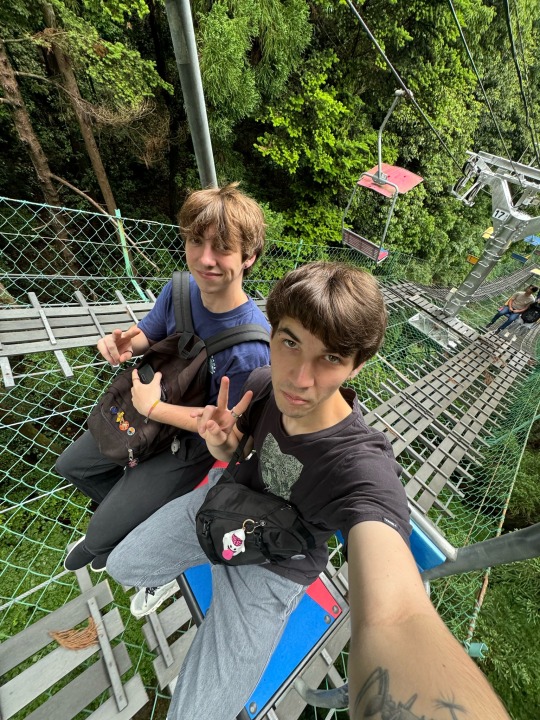
On our way to the summit, we passed various temples and shrines, as well as a lot of memorabilia representing Japanese mountain goblins (known as Tengu.)

On my way up the mountain with the class, we took the most direct route (which was a lot more stair climbing than an actual hiking) but on the way back after we were released for the day, I took a less travelled path down the side of the mountain back to the chair lift. This hike was possibly my favorite part of the trip so far. The views of Japan from Mt. Takao after the sky cleared up were truly breathtaking.
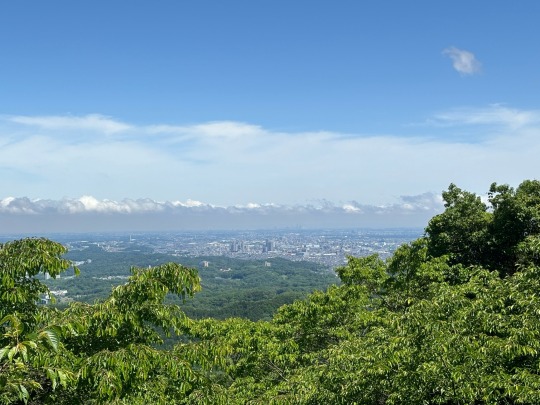
The visibility was unbelievable, to be able to see all of Tokyo from such a distance, surrounded by such lush greenery was honestly one of the most amazing things I have ever seen. After riding the chair lift back down, Zachary, Griffin, and I all got fried doughnuts in Hachioji (the town at the foot of Mt. Takao,) before making the trip back to Edoya.
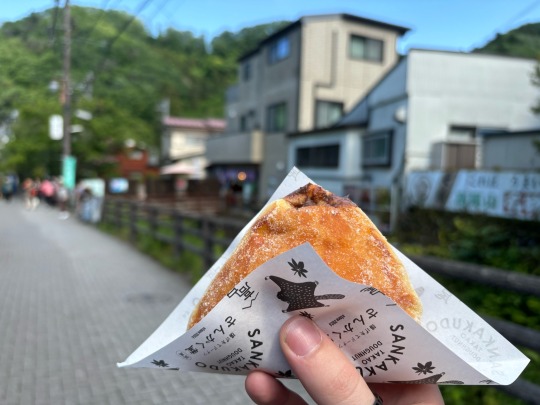
After getting back to Edoya, we went to a local burger place called Crane and my teriyaki burger was delicious (well played Japan.) After my very late lunch, Rich, Zacahry and I went to Ikebukuro where we walked around sunshine city (a famous shopping mall) for an hour or so before returning to Edoya once more.
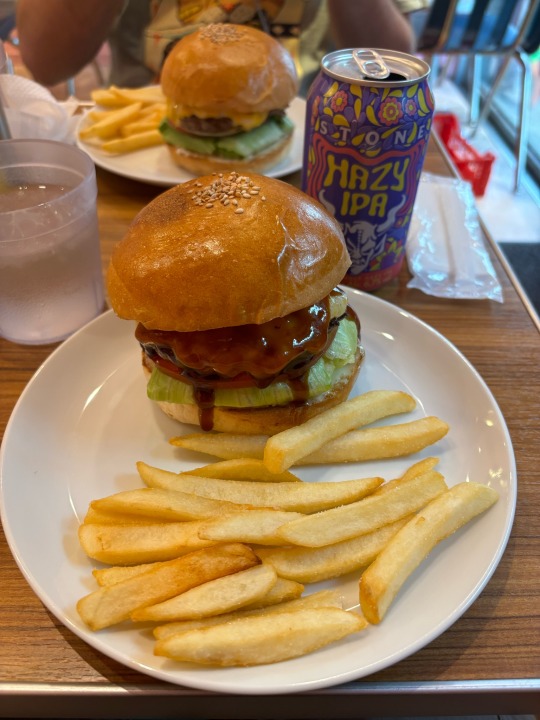
Academic Reflection
Japan is notorious for its lush and well-maintained forests but this was not always the case. Like most developed nations, Japan has not always been so vigilant about maintaining their natural areas. During the 1800s and prior, deforestation was a serious problem in Japan due to powerful individuals over harvesting lumber. Powerful rulers were only one of two main factions competing over lumber during these times. Peasants also participated in deforestation as means to collect fuel and fertilizer. During the Edo period, a division was drawn between the forests available to villagers and the forests which were only to be accessed by rulers. Peasants and villagers were allowed to harvest resources only around where their villages were, and the lumber higher up the mountains were reserved for the powerful. Rights for the use of land were handed out and were transferable between individuals. Fortunately, as I saw at Mt. Takao today, this is no longer a problem in Japan. This is thanks to centuries of vigilant forest management by the Japanese following their deforestation crisis. Japan accomplished the reestablishment of their lush forests by carefully selecting what seedlings to plant and where, based on their perceived usefulness to humans over the course of hundreds of years.
1 note
·
View note
Text
May 15 - Guest lecture, Musashi univ. / Activity with Musashi U students
Freewriting
I woke up this morning at 7:30 to get ready for breakfast. After waiting till 8 to make sure there was no pop-quiz for the day, I headed downstairs for my classic Hotel Edoya breakfast of rice, turkey, broccoli, and two dumplings. After breakfast, I attended our morning class meeting before leaving for Musashi University. After thirty minutes by train and two transfers, we were in Nerima, Tokyo. After walking to Musashi from the station, we were introduced to the professor whose class we would be sitting in on for the day. After a quick tour of the school, we attended class with his usual students were we discussed the concept of a utopia. The class discussion was brief but interesting. For the duration of the period, we went outside where we were encouraged to speak with the other students in the class from Musashi University. I really enjoyed speaking with the students from Musashi, they were extremely kind and it was a great opportunity for me to practice my Japanese while they could practice their English.

After the period concluded, I exchanged social media handles with a number of the students that I had gotten to speak with before heading off with them for some lunch on campus. I ate at one of the food trucks available on campus and it was both affordable and delicious (it honestly put the UF dining hall food to shame.) After getting to speak with them some more, it was time for us to leave Musashi but hopefully we will keep in touch!

Our next stop for the day was Tokyo station where we would be meeting up with students from another university so they could give us a tour of the area.
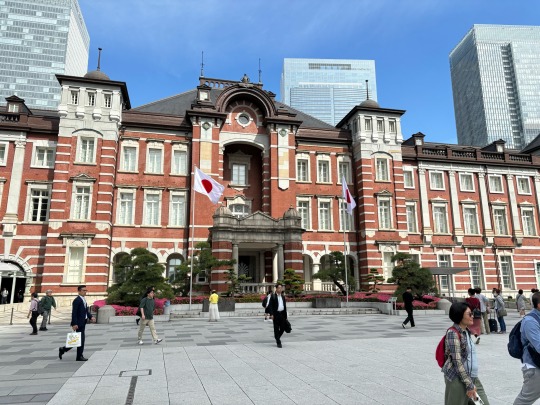
Unfortunately, the tour guide assigned to Griffin and I knew less about Tokyo than we did! It was alright though, Ryo was a really nice guy and he was happy to practice his English as we walked around Tokyo station and some surrounding areas. While walking around Tokyo station we saw all sorts of stores, and unfortunately a man who appeared deceased being taken away by paramedics outside the station (thoughts and prayers). After our eventful "tour" I returned to Hotel Edoya to get ready to go thrifting and get dinner with Zachary.
Academic Reflection
Futurism is defined as the study of events and trends relating to the future with intent to anticipate aspects of it. The professor who led our class at Musashi University today discussed the concept of a Utopia with us and had us reflect on our own thoughts relating to the matter. Something that stood out to me in the video that he shared with us was how Utopia translates to both good place and no place. To me, this feels like a way of saying that a utopia is an unachievable goal but one worth striving for regardless. In a society where everyone is an individual and has free will, I do not see a utopia as a realistic possibility because everyone's "perfect society" would be different. It was really interesting to hear the thoughts and opinions of the Musashi University students on the concept of Utopia because they understood in a way totally different than me. Some of them viewed utopia as an achievable ideal while some viewed it as a purely theoretical concept. This difference of opinion connects to one of the three tenants of futurism discussed in our reading for the day, any useful ideas about the future should appear ridiculous. While I did not feel that anyone's beliefs were inherently ridiculous, they varied heavily from my own. I think that this variety of thought processes could lead to effective developments for achieving a "preferred future."
2 notes
·
View notes
Text
May 14 - Ueno Park and Tokyo National Museum / Akihabara
Freewriting
Today started a little later than usual with our class assembly taking place at 10 instead of 9 due to the prior nights Bunraku performance running late (thank you professor Smith!) I skipped the hotel breakfast, instead opting to eat two croissants from 7/11 (they were pretty good, all things considered.) The first stop of the day was Ueno Park, which was within walking distance so we skipped the train for the first few activities. After arriving at Ueno park, we visited Shinobazunoike Benten-do Temple (try saying that five times fast.) The shrine had a snake motif but it was really cool to see a shrine in the middle of a national park!
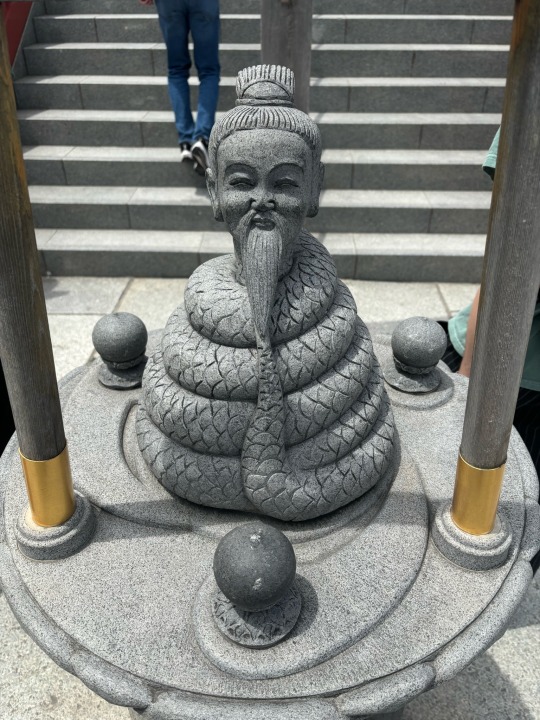
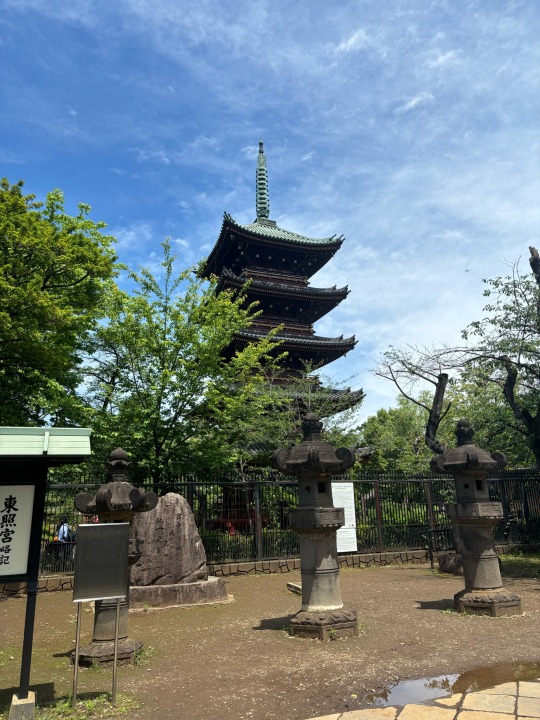
After walking through the park, our next stop was the Tokyo National Museum! The museum was probably one of my favorite stops of the trip so far, there were so many cool pieces of history on display, alongside some truly breathtaking art.
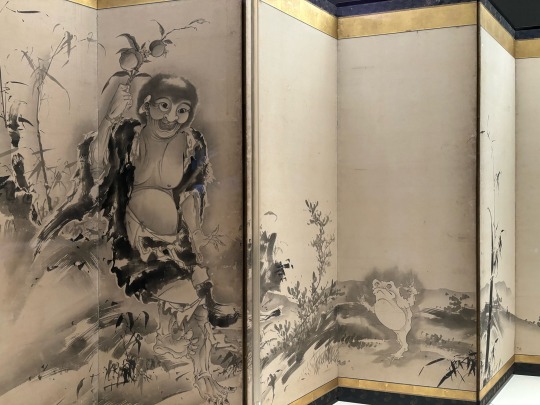
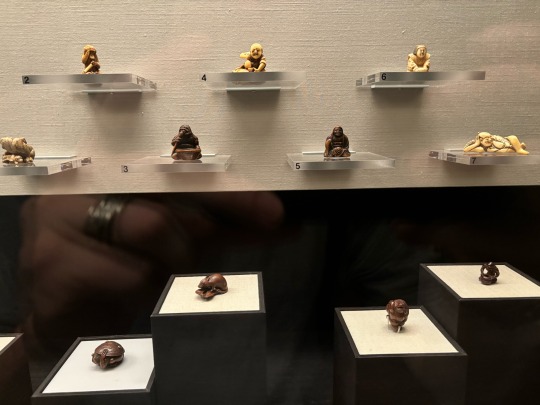
My favorite piece in the museum was probably a family heirloom bow of the Sereta samurai clan (pictured below.) The skill and strength required to effectively use such a weapon must have been truly astounding. Its size and striking red color really drew me in.

After exploring the rest of the museum, we left for Akihabara where I had a really good pork bowl for lunch. After a little bit of exploring and a little time spent in the arcade, I headed back to Shibuya to do some shopping. I went in a few stores, but once again Tokyo's fashion district prices strike again (I'm trying to ball on a budget and Tokyo is not working with me I'm afraid.) Walking around with some friends was still fun though and after some ramen for dinner, I hopped on a train back to Hotel Edoya (where I wrote my WHOLE last blog before tumblr deleted it out of existence forcing me to rewrite it.) Overall, another long but great day in Tokyo!
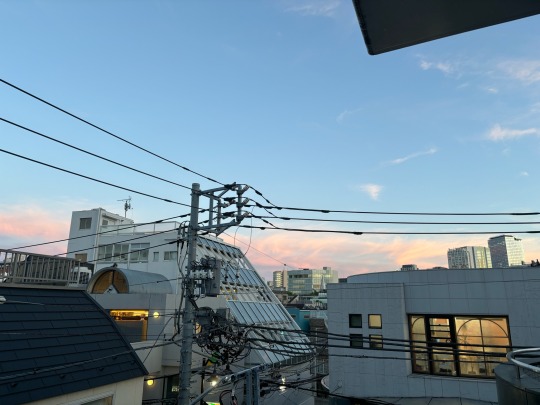
Academic Reflection
The Tokyo National Museum had a number of haniwa on display. Haniwa are terracotta figures, often depicting warriors that were made to be used in funerary rituals during the Kofun period of ancient Japan. These figures of humans, animals, common objects, and more would be buried alongside warriors. I feel extremely lucky to have been able to see some of these ancient relics with my own eyes. One particular haniwa that stood out to me at the Tokyo National Museum, was one of a chicken. Only the head remained intact after thousands of years but the craftsman ship was still very well done. To be able to craft such a precise object so long ago with so few reliable tools was very impressive to me.
Walking around Akihabara, the moe culture heavily discussed by both Azuma and Saito was palpable. There were characters on every building and they were advertising anything and everything. Many of these character's designs also lacked any concise narrative, incorporating seemingly random elements into their character designs for no apparent reason. There were also a number of people who I would perceive as "otakus" at a passing glance, reinforcing the sentiments of Saito. However, many of them seemed polite and were making their best efforts to keep to themselves.
3 notes
·
View notes
Text
May 13 - Tsukiji Honganji / Mitsukoshi Ginza
Freewriting
I woke up at 7:30 today (back to our regularly scheduled programming) and got ready for my now 8:00 breakfast. I ate a light breakfast (Hotel Edoya's breakfast is notably less appealing after 7 days of eating rice and turkey in a row) before getting ready to leave for Tsukiji Honganji Temple. Tsukiji Honganji Temple wasn't like any of the other Shinto or Buddhist temples that we have visited on the trip thus far. The temple was made of stone and resembled a catholic church, with seating available inside and even housing a large pipe organ.
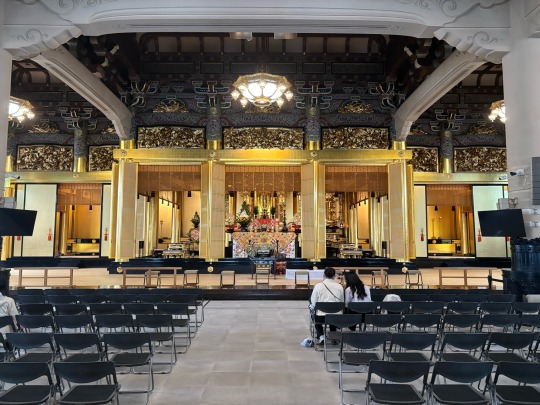
Our next stop was the Tsukiji fish market, which is Tokyo's largest fish market. There were seemingly endless alleys and warehouses of fresh sushi, sashimi, and a plethora of other seafood (it was beautiful.)

For lunch break, I went to a sushi restaurant within the fish market and had one piece of fatty tuna, salmon, red snapper, yellow tail, and eel (all of which were delicious.) Our next stop was Ginza, Tokyo's designer district. Everything here was way out of my price range but it was still an interesting area to walk around. A little ways from Ginza, I stopped for lunch at a little hole in the wall that was overflowing with business men on their lunch breaks (that's how you know its a good spot.) After eating lunch, I stopped for cake on the way back to Hotel Edoya, it was delicious.
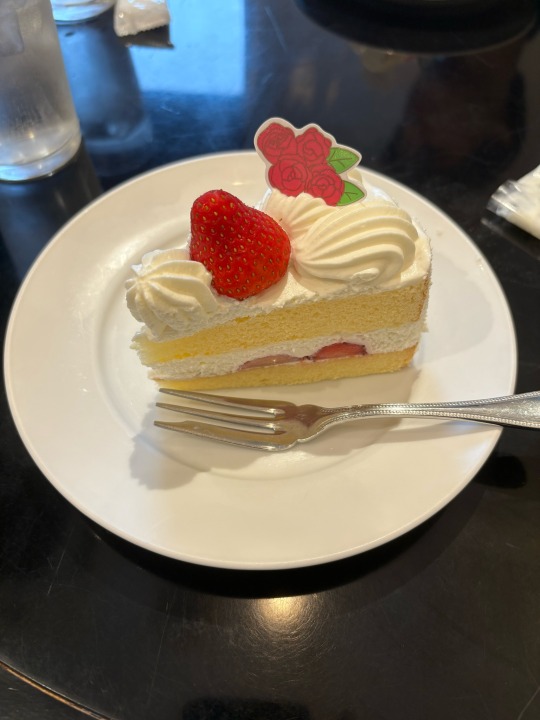
Once back at Hotel Edoya, I did my laundry (this time at a nearby laundromat because Edoya's dryers are horrendous.) With my laundry done, I got ready for the evenings class activity, a Bunraku show. Bunraku is the Japanese artform of using large puppets to tell traditional Japanese stories. We only watched the ladder half of the show but it was very enjoyable. On the way back home, I stopped for MOS Burger (a Japanese burger chain, I wasn't impressed) before chilling out and watching a movie with friends for the remainder of the evening!
Academic Reflection
Bunraku is the Japanese art of storytelling through life-sized puppets, which began in 17th century Osaka. The artform centers around large puppets that are operated by between one and four people, as well as a chanter and a biwa player. The various chanters were the stars of the show for me, the depth of emotion and the range of their facial expressions were extremely entertaining to watch. The Bunraku performance that we attended was Sakaro, The Secret Art of Rowing. The storyline of this performance was the same one as the day's reading, so it was easy to follow despite understanding very little of what the chanter was chanting. The story centers around the high ranking retainer of a deceased lord, Matsuemon as he acts to defend the heir of his deceased lord. The story is characterized by deceit, big reveals, and bigger emotions. All of which are common themes in Bunraku performances, as mentioned in the reading as well as our morning discussion. Within this story and the live performance, Gonshiro was my favorite character. His dialogue and flippant emotions were very entertaining and I found his character's conclusion to be very satisfying. I truly enjoyed the Bunraku performance. It managed to delivered exciting fight scenes and emotional highs and lows, all while maintaining a concise narrative with puppets.
1 note
·
View note